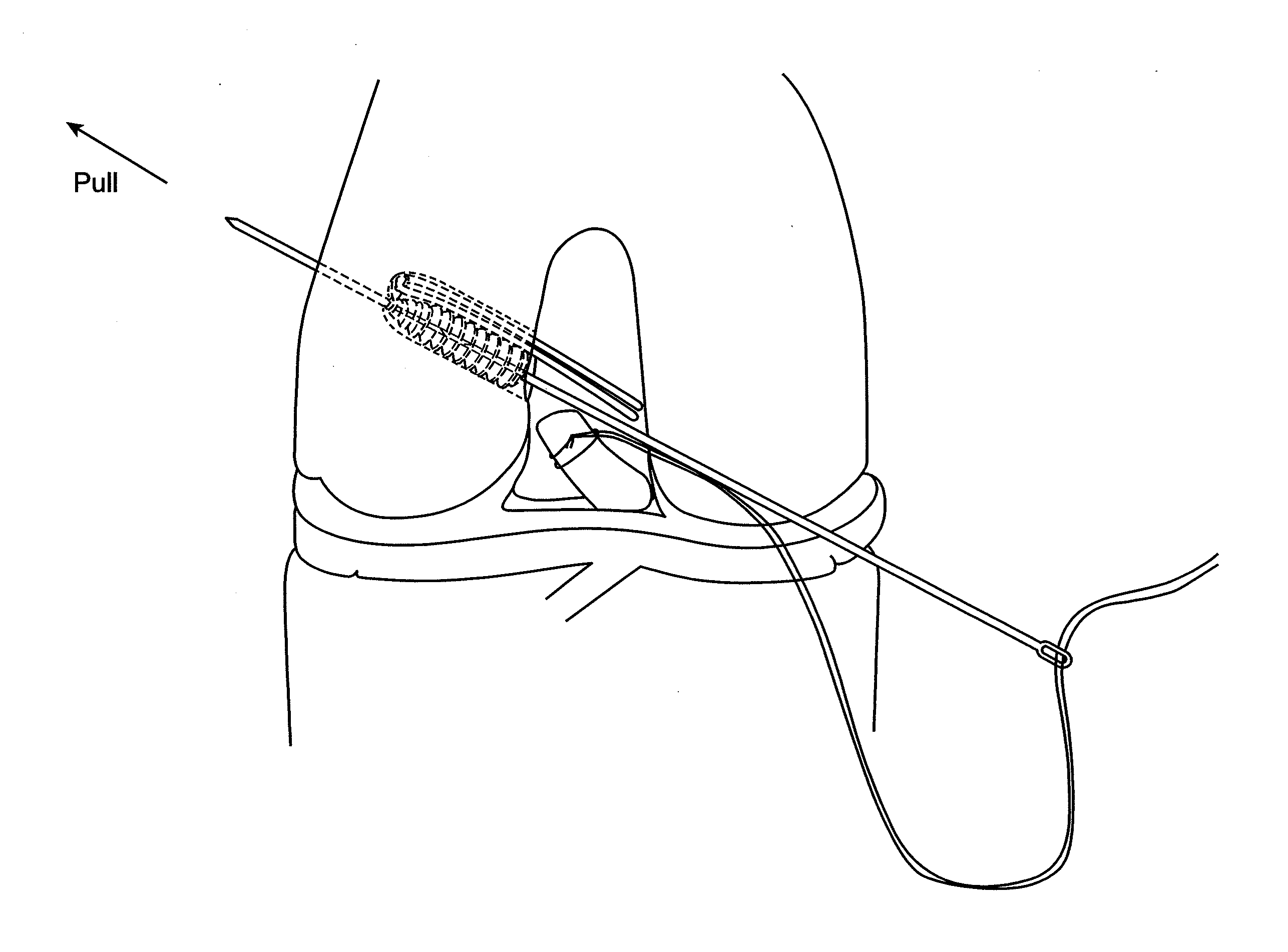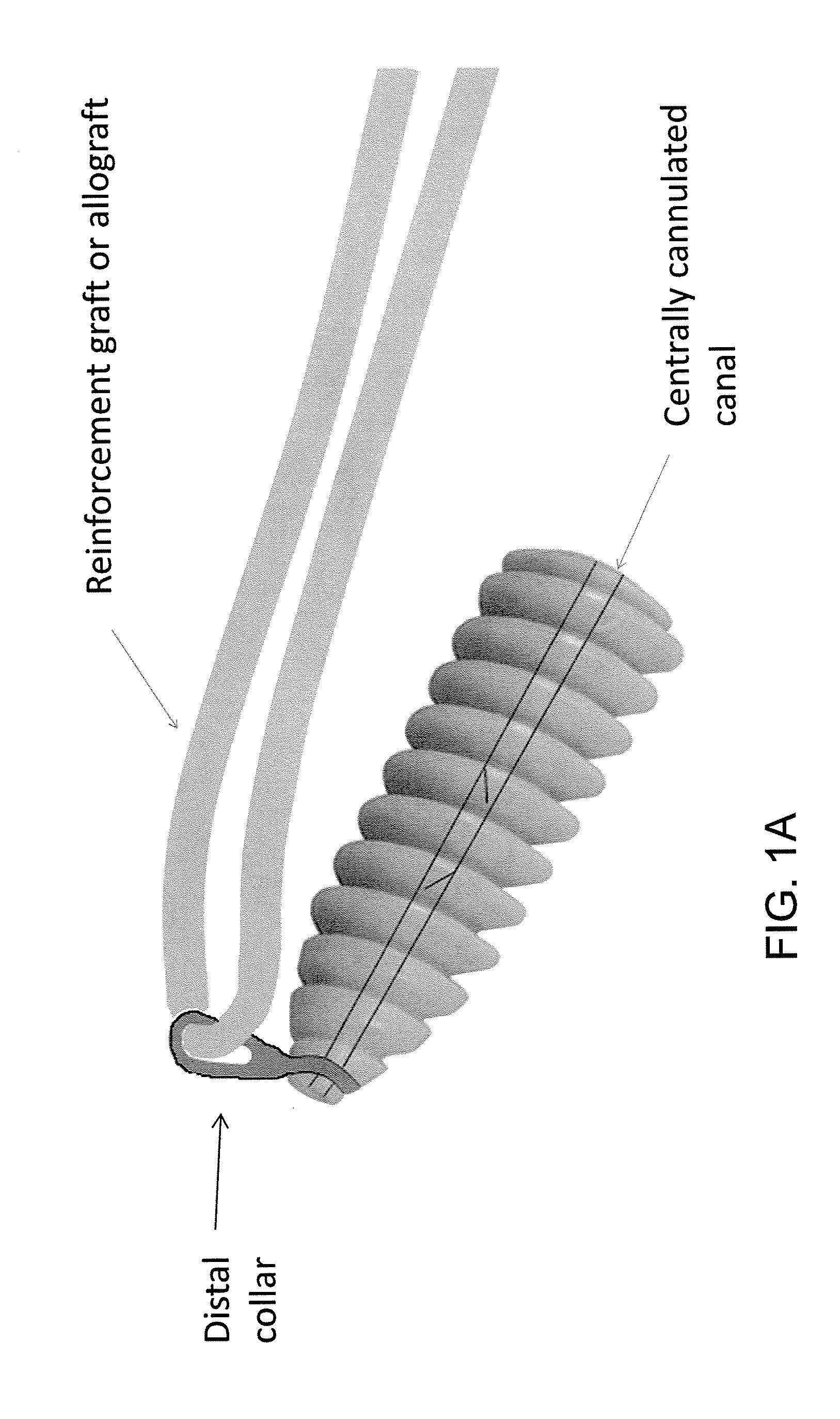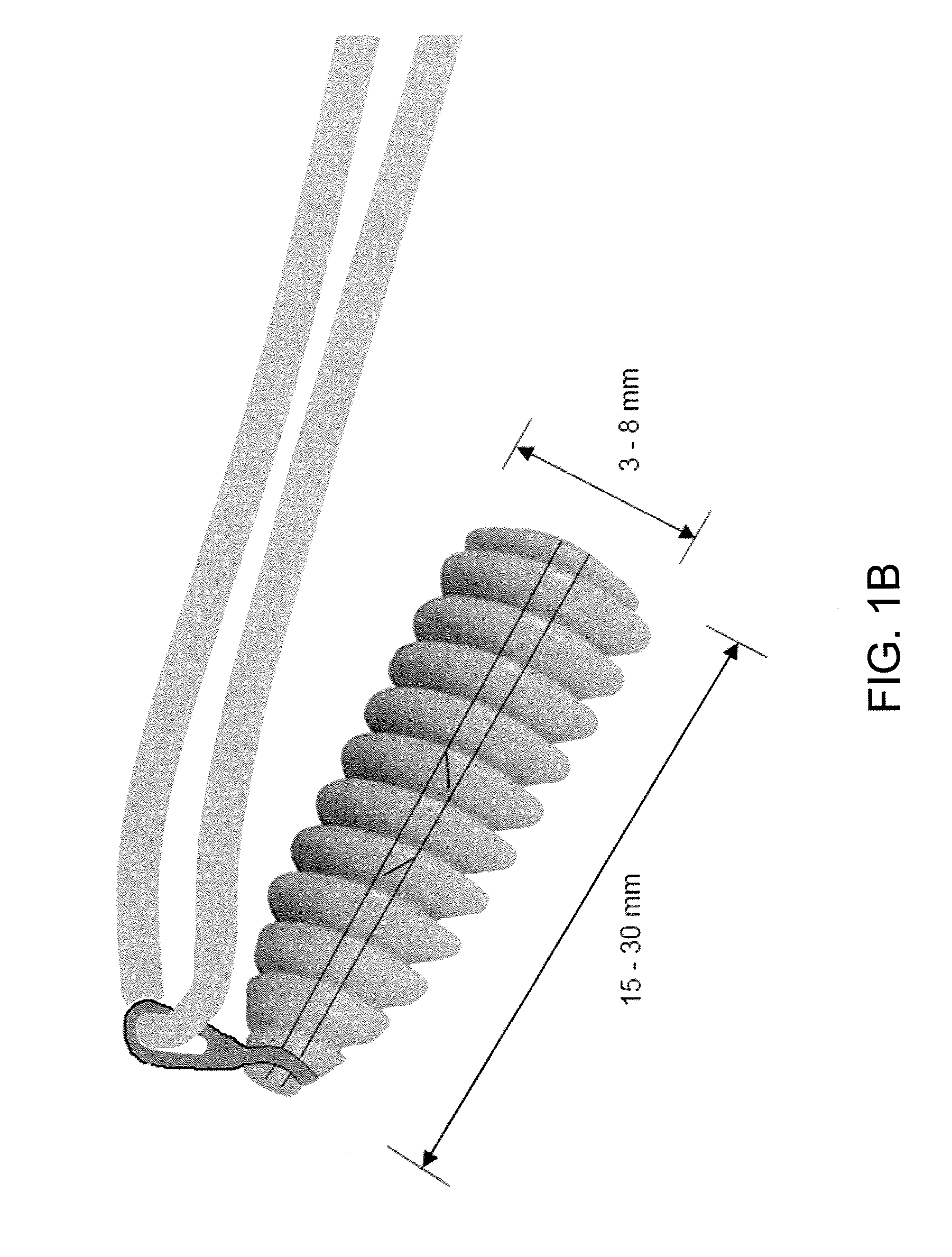Implant and method for repair of the anterior cruciate ligament
a technology for anterior cruciate ligaments and implants, which is applied in the field of devices, systems and methods for repair of anterior cruciate ligaments (acl), can solve the problems of long surgical time, painful and debilitating tear of anterior cruciate ligaments, and ineffective sewing of torn acls
- Summary
- Abstract
- Description
- Claims
- Application Information
AI Technical Summary
Benefits of technology
Problems solved by technology
Method used
Image
Examples
Embodiment Construction
[0028]In general, described herein are methods and devices for use in repair of a patient's anterior cruciate ligament (ACL). These methods (and devices for performing them) allow the repair, rather than merely replacement, of the ACL. It should be understood, however that the devices and systems described herein may also be used to replace an ACL. The anchoring devices described herein may be inserted into a bone and may hold a graft material within the bone so that the graft may also be attached to the torn or damaged ACL. The implanted anchoring device (which may also be referred to as an “implant” or “knotless graft anchor”) may be particularly well suited for use with any of the continuous suture passers described herein, since these suture passers may allow access to previously inaccessible regions of the knee (or other body regions). For example, the methods described herein may include access into the notch region (e.g., the femoral notch) to anchor a graft in an optimal pos...
PUM
 Login to View More
Login to View More Abstract
Description
Claims
Application Information
 Login to View More
Login to View More - R&D
- Intellectual Property
- Life Sciences
- Materials
- Tech Scout
- Unparalleled Data Quality
- Higher Quality Content
- 60% Fewer Hallucinations
Browse by: Latest US Patents, China's latest patents, Technical Efficacy Thesaurus, Application Domain, Technology Topic, Popular Technical Reports.
© 2025 PatSnap. All rights reserved.Legal|Privacy policy|Modern Slavery Act Transparency Statement|Sitemap|About US| Contact US: help@patsnap.com



